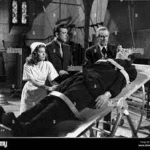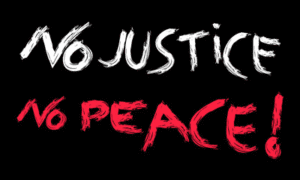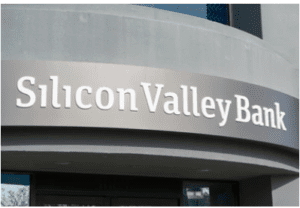Why you should be very concerned about the recent bank failures. Since Reagan, financial institutions over $10 billion have mostly been left to self-regulate. Moral hazard ran amuck throughout our financial systems preceding the 1990s and 2008 financial crashes. And the recent bank failure of Silicon Valley Bank is a powerful sign that it’s happening again. But what does moral hazard mean? And why should you care?
This excerpt is taken from Chapter 9 of the book Stealing Home: How Artificial Intelligence is Hijacking the American Dream

I began my career as a federal bank regulator in the early 1980s. There were many bank failures in those days, including two of the nation’s largest banks, Wells Fargo and Bank of America. Both were eventually acquired by other banks, and their respective names were kept for marketing and branding purposes. However, bringing the dead back to life is both a tricky and dangerous game. Death happens for a reason. In the case of Wells Fargo and Bank of America, the corrupt values of their executives brought about their downfall. Their acquisition and reanimation were as doomed as Frankenstein and his monster.
A bank’s ethical values are shaped over time. How a bank’s leadership responds to situations often becomes the rule, and those rules are then passed on through policy and training to every level of employee. Thus, it is a bank’s CEOs, CFOs, and other leaders who generate the expectations for behavior in-house and with other parties outside the organization. Unfortunately, when top bank leaders are not punished for corrupt behavior, their pernicious values are allowed to permeate entire banks and, eventually, the entire banking industry. When the corrupt values of Wells Fargo and Bank of America were not allowed to die with them, it was eventually left to the American taxpayer to pay the price.

This “too big to fail” logic creates a “moral hazard” situation within the financial sector.
Essentially, it argues that if a person or entity faces little to no consequence from a risky action, they are more likely to engage in that act. For example, an insured driver might drive more recklessly, knowing that their insurance company would cover the cost of an expensive accident.
Back in the early 2000s, the regulators argued that financial institutions, with strong incentives to protect shareholders, would regulate themselves by carefully managing their own risks. However, financial market executives knew their governments would never let them go bust because the ensuing chaos would be too great. Their investment discipline weakened. The most prominent financial institutions began to take excessive risks, knowing that, should things go awry, taxpayers would bail them out.
Unfortunately, they were correct, and taxpayers paid out over $4.5 trillion. The Federal Reserve gave BlackRock no-bid contracts to manage the toxic housing bonds. It sits at $8.5 trillion now.1
Over 10 million Americans lost their homes to foreclosure between 2006 and 2014 —-that’s 3.7 million houses 2 —unprecedented.

The effects of the subprime mortgage crisis are still being felt today. There is even a term for the crisis’s mental toll: “post-foreclosure stress disorder.”
WERE THE BANKS HELD ACCOUNTABLE? NO!
The Federal Deposit Insurance Corp (FDIC )gave those very builders and investors who caused the financial meltdown the contracts to sell those 3.7 million homes.3 Worse yet, instead of the typical 6% sales commission, they paid themselves between 8-30%. Worse still, they overcharged American Taxpayers millions of dollars in inflated costs and fees per a 2012 FDIC audit.4
Then this happened.
They created institutional-investor-owned single-family residences and sold themselves hundreds of thousands of homes at pennies on the dollar. Before 2009, institutional investments in the single-family market did not exist. They lacked the means to manage the properties adequately.

The forthcoming book, The New Landlord Powered by Big Data and Artificial Intelligence, describes what happened. In 2009, RealPage acquired a unique IT software program called Propertyware, an all-in-one, web-based solution for single-family property management [serving companies like Airbnb]. This technology allowed the likes of Invitation Homes and Blackstone to acquire all of those single-family homes.
IN THE END, NO ONE ON WALL STREET WAS EVER HELD ACCOUNTABLE
For example, in early 2014, just weeks after Jamie Dimon, CEO of J. P. Morgan Chase, settled out of court with the Justice Department over the alleged fraud and corruption charges, the bank’s board of directors gave him a 74% raise, bringing his salary to $20 million.5 How a bank’s leadership responds to various situations often becomes the rule, and these rules are then passed on through policy and training to every subsequent level of employee. Moral hazards and the too-big-to-fail mentality continue to spread through the banking industry.
You see, when you have a significant loss on Wall Street, only three dance partners can take the loss—the bondholders, the shareholders, or the taxpayers.
In 2020, the Federal Reserve signaled it would take a lighter touch when supervising big banks.

This now brings us back to SVB and the continuing dance. Are we going to shove this loss into the hands of the taxpayers again?
It’s called MORAL HAZARD…..because they always cheat and we always bail them out.

What Can I Do?
Unfortunately, this problem isn’t going to fix itself; the investors are making too much money. It will take work to fix this. We as community citizens must push our legislators to fix this problem; this is a legislative issue.
We need to contact our local, state, and national congressional representatives and let them know that these types of deceptive programs need to be regulated and fixed. As the saying goes, the squeaky wheel gets the grease.
So Start Squeaking !!!

End Notes:
- David L. Bahnsen, “Did The Financial Crisis End?” National Review, March 2019, nationalreview.com/magazine/2019/03/25/did-the-financial-crisis-end/
- Tommy Andres, “Divided Decade: How the Financial Crisis Changed Housing,” Marketplace, December 2018, marketplace.org/2018/12/17/what-we-learned-housing/. And, Patrick Stone, DS News, “Is a Foreclosure Crisis in the Cards?,” dsnews.com, March 9, 2021, https://dsnews.com/daily-dose/03-09-2021/is-a-foreclosure-crisis-in-the-cards#:~:text=To%20provide%20some%20perspective%2C%20during,result%20of%20the%20Great%20Recession
- News Blog, “FDIC Selects CB Richard Ellis as Advisor,” multifamilybiz, November 28, 2008, https://www.multifamilybiz.com/news/1417/fdic_selects_cb_richard_ellis_as_advisor
- The Website of Federal Deposit Insurance Corporation, Office of Inspector General Report, “The National Owned Real Estate Management and Marketing Services Contract with CB Richard Ellis, Inc.,” dated March 2012, Accessed April 2021, https://www.fdicoig.gov/publications/national-owned-real-estate-management-and-marketing-services-contract-cb-richard-ellis
- William D. Cohan, “How Wall Street’s Bankers Stayed Out of Jail,” The Atlantic, September 2015, theatlantic.com/magazine/archive/2015/09/how-wall-streets-bankers-stayed-out-of-jail/399368/